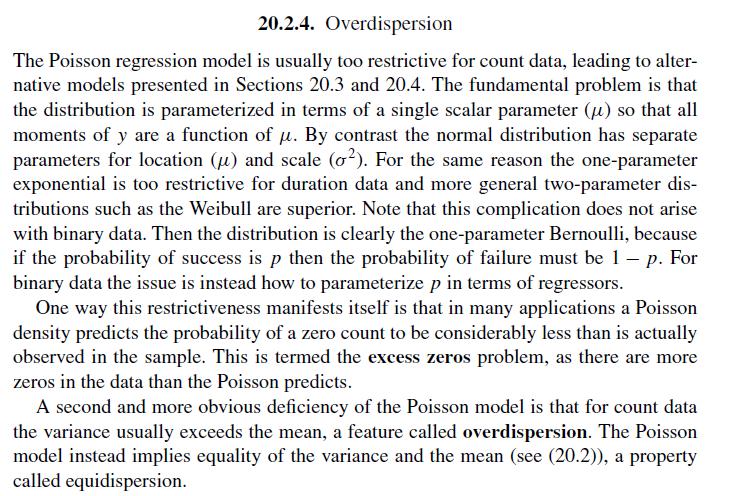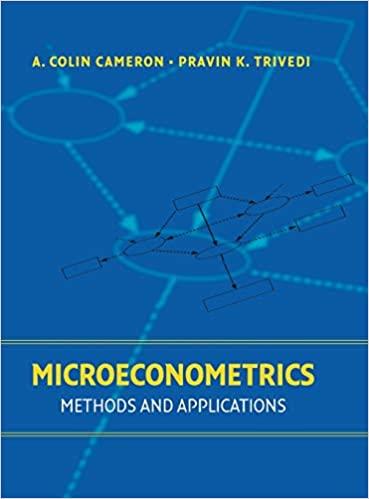Question:
A simple test of overdispersion in a Poisson model given in Section 20.2.4 tests the null hypothesis of zero coefficient in the regression of \(\left[\left(y_{i}-\widehat{\mu}_{i}\right)^{2}-y_{i}\right] / \widehat{\mu}_{i}\) on \(\widehat{\mu}_{i}\). An alternative test proposed in the literature (Baltagi and Li, 1999) involves the same test but is based on the regression of \(\left(y_{i}-\widehat{\mu}_{i}\right)^{2}\) on \(\widehat{\mu}_{i}\). The latter can be motivated by the idea of tests based on the Gauss-Newton regression. Analyze the differences between the tests and the implications of the differences for the manner of implementing the second test.

Transcribed Image Text:
20.2.4. Overdispersion The Poisson regression model is usually too restrictive for count data, leading to alter- native models presented in Sections 20.3 and 20.4. The fundamental problem is that the distribution is parameterized in terms of a single scalar parameter () so that all moments of y are a function of . By contrast the normal distribution has separate parameters for location (p) and scale (02). For the same reason the one-parameter exponential is too restrictive for duration data and more general two-parameter dis- tributions such as the Weibull are superior. Note that this complication does not arise with binary data. Then the distribution is clearly the one-parameter Bernoulli, because if the probability of success is p then the probability of failure must be 1 - p. For binary data the issue is instead how to parameterize p in terms of regressors. One way this restrictiveness manifests itself is that in many applications a Poisson density predicts the probability of a zero count to be considerably less than is actually observed in the sample. This is termed the excess zeros problem, as there are more zeros in the data than the Poisson predicts. A second and more obvious deficiency of the Poisson model is that for count data the variance usually exceeds the mean, a feature called overdispersion. The Poisson model instead implies equality of the variance and the mean (see (20.2)), a property called equidispersion.








